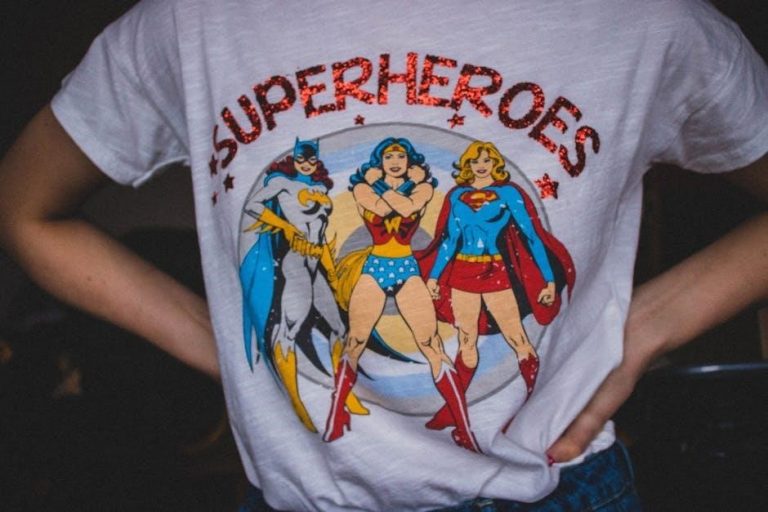
Proper t-shirt placement is crucial for making a statement. It balances aesthetics and functionality, ensuring designs stand out while maintaining wearability. Understanding placement principles enhances both visual appeal and comfort, making it essential for creators and enthusiasts alike to master this art. This guide explores optimal positioning, design types, and tools to help you achieve professional, eye-catching results.
The Importance of Proper Placement
Proper placement ensures a balanced, visually appealing design. It enhances the t-shirt’s aesthetic, making it more professional and polished. Correct positioning avoids overwhelming the garment, maintaining comfort and practicality. Measurements like 2-3 inches below the neckline or 4 inches from the shoulder seam are crucial for symmetry. Different areas, such as the chest or sleeve, offer unique opportunities for creativity while ensuring the design complements the wearer’s form. Strategic placement can elevate a simple design into a striking statement, making it essential for both functionality and style.
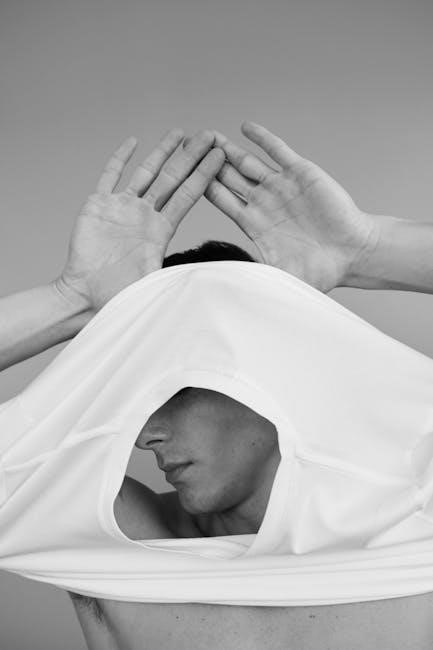
Understanding Design Types
Designs for t-shirts vary widely, including logos, artwork, and text-based designs. Each type has unique considerations for placement and style. Logos are often centered on the chest or sleeve for visibility, while artwork may span the full front or back for maximum impact. Text-based designs can be subtle or bold, depending on the message. Placement areas like the chest, sleeve, or upper back offer versatile options. Techniques such as screen printing, heat transfer, or embroidery further enhance the design’s appearance. Understanding these elements helps create a cohesive look that aligns with the intended aesthetic and ensures the design stands out effectively.
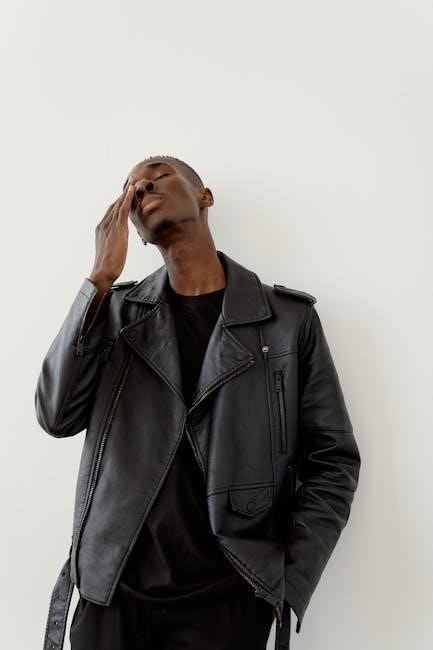
Placement Areas
Strategic regions on a t-shirt, such as chest, sleeve, back, and collar, offer unique opportunities for design impact. Each area provides distinct visibility and aesthetic appeal, ensuring designs are both eye-catching and functional when properly aligned and proportioned.
Chest Placement
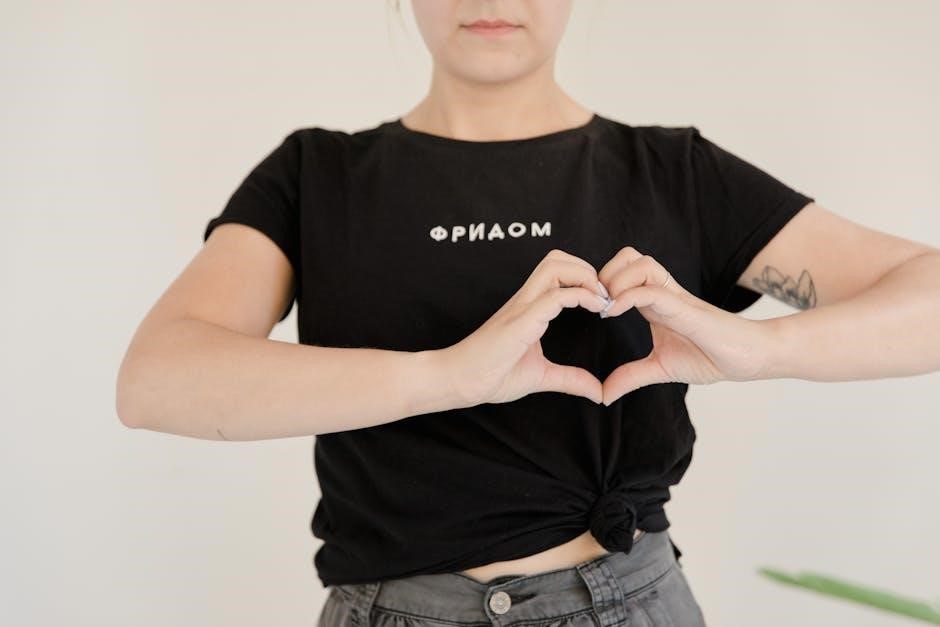
Chest placement is a popular choice for logos, logos, and text-based designs. Positioning the design 2-3 inches below the neckline and 2 inches from the armpit ensures balance. This area offers high visibility, making it ideal for brand promotion. The design should be proportional to the chest width, avoiding overcrowding. For a centered look, align the design symmetrically between the neckline and armpit seams. This placement is versatile, suitable for casual and professional styles, ensuring the design is both noticeable and tasteful.
Sleeve Placement
Sleeve placement offers a stylish and practical way to showcase designs; Positioning the design 3-4 inches below the shoulder seam ensures visibility while maintaining balance. For a polished look, center the design between the shoulder and armpit seams. Larger designs should not extend beyond the armpit to avoid overwhelming the sleeve. This placement is ideal for subtle branding or complementary artwork, enhancing the overall aesthetic without distracting from the main design. Proper alignment ensures the design remains visible when the sleeve is in motion, making it a versatile choice for casual and sporty styles.
Back Placement
Back placement is ideal for bold statements or detailed designs. Center the design on the upper to mid-back, approximately 5-6 inches below the neckline. Ensure the design is proportional to the shirt, typically 10-12 inches wide for standard sizes. This placement enhances visibility and creates balance, making it perfect for logos, artwork, or text. Avoid placing designs too low, as they may be less noticeable. For smaller designs, consider positioning them slightly higher, just below the collar. Proper alignment ensures the design remains centered and visually appealing, making back placement a popular choice for both casual and professional looks.
Upper Back Placement
Upper back placement is a subtle yet impactful way to showcase designs. Position the design 3-5 inches below the neckline, centered between the shoulder seams. This location is ideal for smaller logos or text, as it remains visible without overwhelming the garment. Ensure the design is proportional to the shirt size, typically 6-8 inches wide for standard sizes. For a balanced look, avoid placing designs too low or off-center. This placement works well for minimalist styles, adding a touch of sophistication while maintaining wearability. Proper alignment ensures the design remains noticeable yet understated, perfect for casual or professional settings.
Outer Neck Collar Placement
Outer neck collar placement is a trendy and subtle way to add detail to a t-shirt. Position the design 1-2 inches below the neckline, slightly off-center, for a modern look. This area is ideal for small logos, text, or minimalist artwork, as it remains noticeable without overpowering the garment. Measure about 1 inch from the collar seam to ensure proper alignment. This placement works well for casual and fashion-forward designs, offering a sleek, understated aesthetic. It’s a great way to add a personal touch while maintaining a clean, wearable look that appeals to a wide range of styles and preferences.

Design Types
Designs vary from logos, artwork, and text-based styles, each requiring strategic placement; Logos are often centered for visibility, while artwork and text can be placed creatively for visual impact.
Logos
Logos are best placed in the center chest area for maximum visibility. Positioning them about 2-3 inches below the neckline ensures they stand out without overwhelming the design. For smaller logos, the left chest or sleeve can be ideal, creating a subtle yet professional look. Larger logos might be placed across the back for a bold statement. Proper alignment is key, ensuring the logo is centered and proportionate to the shirt. Using techniques like screen printing or embroidery guarantees a crisp, long-lasting finish, making logos a versatile choice for both casual and formal designs.
Artwork
Artwork placement on t-shirts requires careful consideration to ensure visual balance and wearability. The full front or upper back are ideal for bold, detailed designs, while smaller pieces can be placed on sleeves or above the chest. Positioning artwork 4-5 inches below the neckline ensures it remains visible without overwhelming the wearer. For sleeve designs, aligning the artwork 3 inches below the shoulder seam creates a polished look. Proper placement enhances the aesthetic appeal and comfort of the garment, making it essential for both creators and enthusiasts to master this technique for professional results.
Text-Based Designs
Text-based designs are a popular choice for t-shirts, offering simplicity and impact. Optimal placement for text is typically the center chest, positioned 2-3 inches below the neckline, ensuring readability and balance. For a more subtle look, text can be placed on the left chest or sleeve, aligned vertically or horizontally. The upper back is another excellent spot for bold statements, centered and 4-5 inches below the neckline. Keeping text concise and using readable fonts enhances visibility. Proper alignment and spacing are key to maintaining a polished appearance. This placement ensures the design is both visually appealing and comfortable to wear.
Tools and Techniques
Essential tools include heat presses, screen printing equipment, and embroidery machines. Techniques vary from direct-to-garment printing to hand-stitching, ensuring high-quality finishes for various designs and fabrics.
Screen Printing
Screen printing is a popular technique for t-shirt designs, offering durability and vibrant colors. It involves transferring ink through stencils onto fabric. Proper alignment is crucial, with designs typically placed 3 inches below the neckline and 2 inches from the armpit. Use rulers or laser guides for accuracy; Ideal for bulk orders, screen printing works best on flat, smooth fabrics. Ensure the design aligns proportionally between the neckline and armpit seams for a polished look. This method is widely used for logos and artwork, providing a professional finish that lasts through repeated washing and wear.
Heat Transfer
Heat transfer is a versatile method for applying designs to t-shirts, ideal for small orders and intricate details. It involves transferring designs onto fabric using heat and pressure. Place designs about 2-3 inches below the neckline for optimal visibility. This technique works well on various fabrics, including specialty materials. It’s perfect for vibrant, detailed artwork and text-based designs. Ensure the design is centered and aligned properly before applying heat to avoid misplacement. Heat transfer is a popular choice for its ease of use and ability to produce high-quality, long-lasting results on both standard and specialty fabrics.
Embroidery
Embroidery is a premium method for adding designs to t-shirts, offering durability and a classic look. It’s ideal for logos, names, and intricate patterns. Place embroidered designs on the chest, approximately 3-4 inches below the neckline, for a balanced appearance. Ensure the design is centered and aligned with the armpits for a polished look. Simpler designs work best, as detailed embroidery can be challenging. Bold text and logos are particularly effective. This technique is perfect for creating a timeless, professional finish. Embroidery is a popular choice for its high-quality results and ability to withstand repeated washing without losing its vibrant appeal.
Measuring and Aligning
Accurate measuring and aligning are essential for professional-looking t-shirt designs. Start by positioning the design about 3 inches below the neckline and 2 inches from the armpit for a balanced look. Use a ruler or measuring tape to ensure precision. Align the design with the shirt’s center, as misalignment can detract from the overall aesthetic. For sleeve placement, measure 2-3 inches below the shoulder seam. Always test the placement on a mockup before printing. Proper alignment ensures the design looks polished and proportionate, enhancing both functionality and style. Consistency is key to achieving a professional finish.
Material Considerations
Fabric type significantly impacts design placement and durability. Cotton and polyester blends are ideal for vibrant prints, while smooth fabrics like tri-blend ensure crisp, detailed designs.
Fabric Types
Fabric types play a crucial role in determining the success of your t-shirt design. Common fabrics include cotton, polyester blends, tri-blend, organic cotton, and specialty fabrics like bamboo or rayon. Cotton is breathable and durable, making it ideal for vibrant prints. Polyester blends offer smooth surfaces for detailed designs and reduce fading. Tri-blend fabrics combine polyester, cotton, and rayon for a soft, vintage look. Organic cotton is eco-friendly and gentle on skin, while bamboo offers moisture-wicking properties. Rayon adds a silky texture, perfect for artistic designs. Each fabric type has unique characteristics that affect print durability, breathability, and comfort, ensuring the right choice enhances your design.
Specialty Fabrics
Specialty fabrics offer unique textures and properties for t-shirt designs. Bamboo fabric is breathable, moisture-wicking, and eco-friendly, ideal for active wear; Tri-blend fabric combines polyester, cotton, and rayon for a soft, vintage look. Fleece is thick and plush, perfect for embroidery or bold graphic prints. Neoprene is durable and stretchy, often used for modern, edgy designs. Recycled polyester is eco-conscious and suitable for outdoor apparel. Each specialty fabric provides distinct benefits, from comfort to durability, allowing designers to cater to specific styles and preferences while ensuring long-lasting, high-quality results that stand out in both functionality and aesthetics.
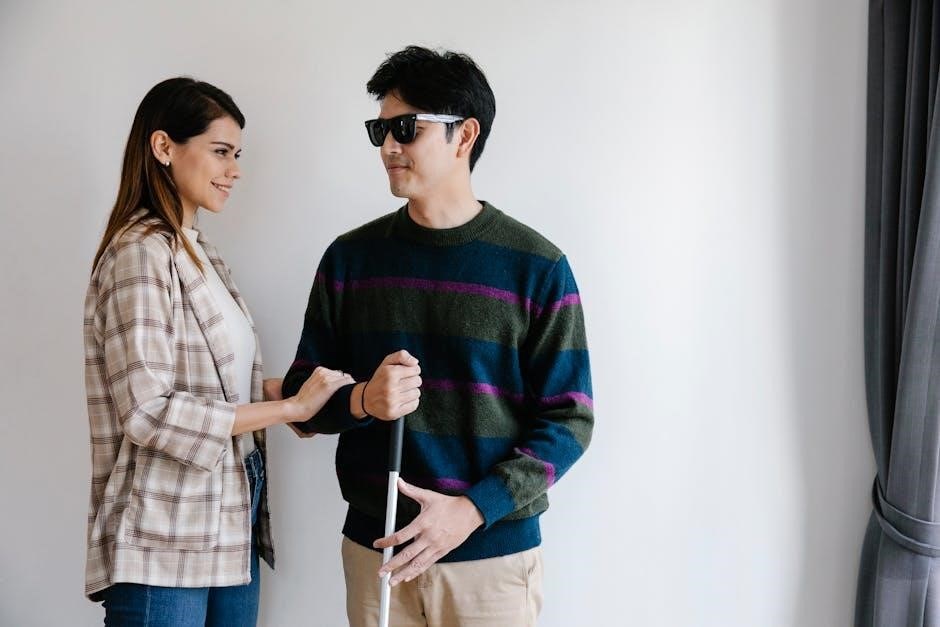
Style and Fashion Trends
Current fashion trends emphasize bold, eye-catching designs while maintaining timeless appeal. Minimalist logos placed centrally on the chest remain popular, offering a sleek, modern look. Oversized graphics on the back are trending, creating a statement piece. Retro-inspired artwork and vintage-style text designs are also in vogue, evoking nostalgia. Bright, contrasting colors and asymmetrical placements add a contemporary edge. Additionally, eco-friendly materials like organic cotton and recycled polyester are gaining traction, aligning with sustainable fashion. These trends highlight the importance of strategic placement to enhance both style and wearability, ensuring designs resonate with current fashion-forward audiences while maintaining practical appeal.
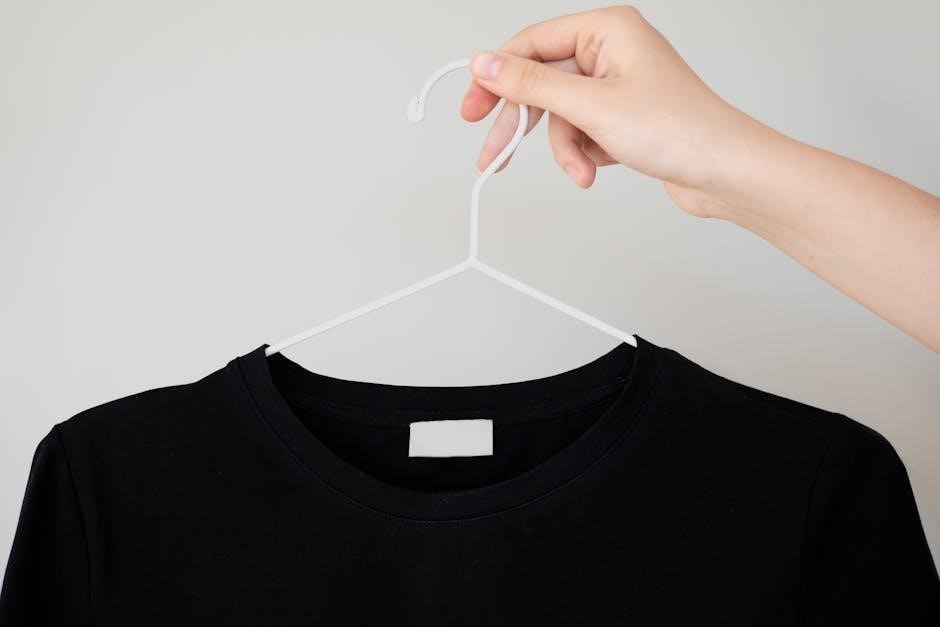
Common Mistakes to Avoid
One of the most common mistakes is incorrect positioning, where designs are either too high or too low. Ensuring proper alignment is key to a polished look. Overcrowding the design area can make the t-shirt appear cluttered, so maintaining balance is essential. Another error is ignoring fabric type; designs on stretchy or textured materials may distort. Using measurements inconsistently can lead to asymmetry, so precise tools are crucial. Lastly, failing to consider the wearer’s body type can affect the design’s impact. Avoiding these pitfalls ensures a professional, visually appealing result that enhances both the design and the garment.

Best Practices
Measure carefully and use alignment tools to ensure designs are centered and evenly spaced. Test placements on actual garments to confirm proportions. Keep designs proportional to the chest size, avoiding oversized elements that overwhelm the shirt. Use high-quality materials and techniques like screen printing or embroidery for durability. Consider fabric type, as stretchy materials may require adjustments. Maintain consistency in spacing, especially for text-based designs. Position logos and artwork thoughtfully to enhance visual appeal. Always preview designs on a mockup before printing to ensure the best results. These practices guarantee professional-looking, long-lasting t-shirt designs that stand out.
Mastering t-shirt placement is key to creating stylish, professional designs. By understanding optimal positioning, design types, and techniques, you can elevate your creations. Proper placement enhances both aesthetics and wearability, ensuring your designs stand out. Whether using logos, artwork, or text, careful consideration of size, alignment, and fabric type leads to polished results. Experiment with tools like screen printing and embroidery for lasting impressions. Remember, the right placement balances creativity with practicality, making your designs both visually appealing and comfortable. With these insights, you’re ready to craft t-shirts that make a lasting statement.
